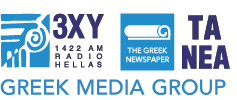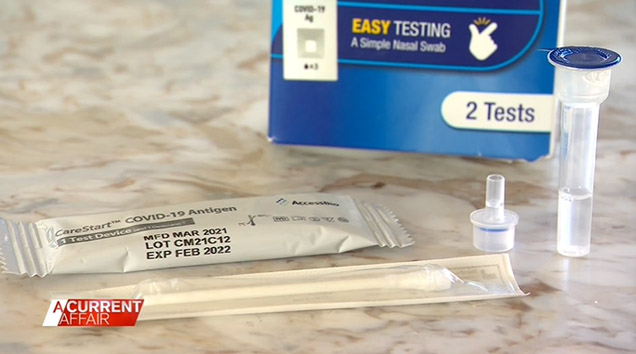Source: 9news
Many Aussies have now experienced how invasive a PCR (polymerase chain reaction) test can be as the application wand reaches deep into your nostril cavity to collect a sample for COVID-19.
To make life easier, 13 rapid antigen tests have been approved by the TGA for at-home use and are much less invasive.
It can be confusing, so we’ve broken down how to the new rapid tests work, and how to use them:
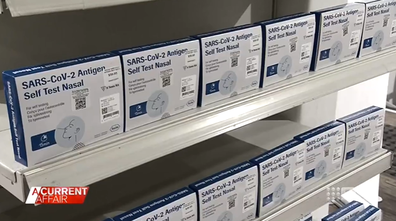
Which tests are available?
The tests on the market so far can be broken down into three categories – a nasal swab, oral fluid test, or saliva pen.
Two examples of a rapid antigen nasal swabs available include the CareStart COVID-19 Antigen Home Test (one-pack for $14.99) and the RightSign COVID-19 Antigen Rapid Test Cassette (two-pack for $24.99).
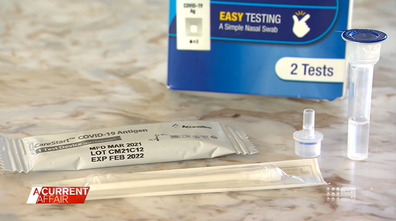
What to do
The nasal swab is much easier to use than the PCR test.
The wand is only inserted two to three centimetres into the nose.
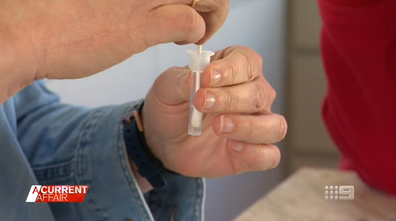
The tip is then rotated inside, which collects the sample required for testing.
The sample is then placed in a chemical which is provided inside the at-home test kit – then rotate the wand for 10 seconds while pressing on the tip, as the wand is pulled out.
Three drops of the sample are then placed on the testing cassette and results will appear between five and 20 minutes afterwards depending on the kit.
What the results mean
Two lines in the “C” and “T” section of the cassette, represents a positive COVID-19 result.

One line in the “C” section is a negative COVID-19 result.
And if there is one line in the “T” section, or no lines – this result is invalid and the test will need to be conducted again with a separate kit.
If a positive result is recorded, a follow-up PCR test will need to be performed.
How they are working for the community
Melbourne mum Kate Nelson said rapid antigen tests allow her to differentiate her son Charlie’s hay fever symptoms from COVID-19.
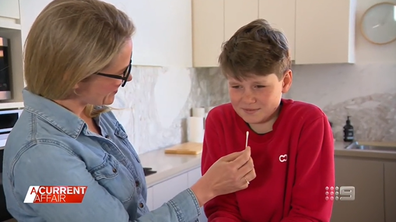
“We don’t have to go and stand in a queue first thing in the morning, miss half a day or full day of school,” she told A Current Affair.
Catherine Bronger is a pharmacist at Chemist Works in Wetherill Park and said the rapid antigen tests will be an invaluable factor in helping a community that was specifically impacted by the pandemic.
“I was pretty excited that rapid antigen testings could come through community pharmacy. I think it’s one of those things that is very convenient, for patients,” she said.

Rapid antigen test – oral fluid instruments
The second type of rapid antigen test approved is the oral fluid instrument.
There’s the All Test COVID-19 Antigen Rapid Test, Oral Fluid, ( a one-pack is $14.95) and the Orawell COVID-19 Ag Saliva Test Device, Self-Test, (one-pack for $14.95).
What to do
To begin with, you need to cough deeply three to five times.
For the Orawell test, you need to rub the collection pad against the inside of your cheeks 10 times on each side of your mouth (20 times in total).
The collection pad is placed on the tongue for one to two minutes before the device is then sealed with the cap.
For the All Test oral fluid test, you will need to cough three to five times and spit into a funnel which will collect saliva into a test tube.
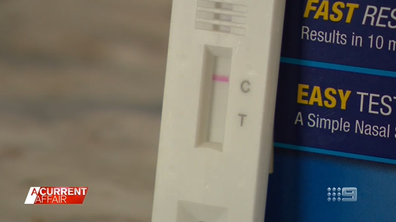
This sample is mixed with a chemical agent, both are then squeezed together before three drops are placed on a testing cassette.
Results should start to appear between 10 to 15 minutes afterwards.
What the results mean
Similar to the nasal swab test, two lines on the “C” and “T” section indicate a positive result while one line on the “C” section is a negative result.
A line on the “T” section or no lines is an invalid result.
The saliva pen, rapid antigen test
The third type of rapid antigen test on the market is the saliva pen.
The only saliva pen approved in Australia is the Ecotest COVID-19 Antigen Saliva Test kit (a two-pack is $24.95).
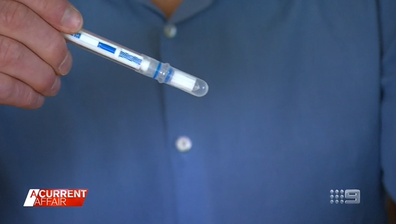
What to do
The first step is to cough deeply four times with your mouth closed then place the saliva collection pen inside your mouth on top of your tongue and hold for two minutes.
The tip of the pen, where the saliva sample was collected, is then placed inside the buffer cap.
Then press down on the wand to release the solution inside.
Wait 15 minutes before reading the result.
What the results mean
A positive result is represented by two lines, one in the “T” section and the “C” section of the pen.
A negative result is one line in “C” section.
One line in the “T” section or no lines in both lines is an invalid result.
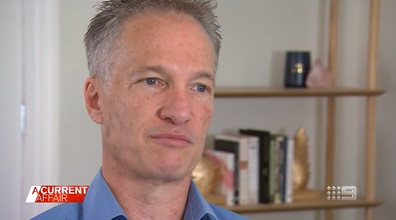
Andrew Lloyd from PathDX is the country’s local supplier for the Ecotest COVID-19 Antigen Saliva Test kit.
“It’s less invasive, all saliva tests are less invasive. It’s really easy for children to use, because it’s difficult sometimes to get them to have nasal swabs,” he said.
At-home rapid antigen tests are not subsidised by the government like they are in the UK, but Mr Lloyd believes this is something that could change in the future.
“There’s government tenders out, I think governments are going to buy them for healthcare professionals, for hospitals, possibly schools. I think there’s been a lot of expense with the RT-PCR costs, and this is a much more economical way to test people. So, I think things might change in the near future,” he said.
